Science Highlights, July 6, 2016
Awards and Recognition
Materials Physics and Applications
Water-removal technique boosts performance of nanomaterials for energy applications
Materials Science and Technology
Rapid method developed to calculate properties of multicomponent materials
Awards and Recognition
Aikin and Cerreta honored as ASM Fellows
ASM International named Beverly Aikin (Sigma Division, SIGMA) and Ellen Cerreta (Materials Science in Radiation and Dynamics Extremes, MST-8) to the 2016 class of Fellows. Recipients of one of the highest honors in the field of materials, ASM Fellows are technical and professional leaders who have been recognized by their colleagues and serve as advisors to the Society.
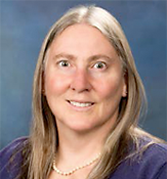
Beverly Aikin
Aikin was cited for “advancing microstructure, property, processing relationships in metals and intermetallics; enhancing the safe handling, security and recycling of beryllium; and for her commitment to K-12 student outreach in STEM.
Aikin holds a Ph.D. in materials science and engineering from the University of Virginia. She joined the Laboratory as a graduate research assistant in what was then the Metallurgy group (MST-6, now Sigma Division). Aikin is an R&D engineer on Sigma’s forming and machining team, maintaining beryllium and hot isostatic processing capabilities in the Beryllium Technology Facility for weapons, global security, nuclear fuels, and other Los Alamos research programs. She has been a volunteer for the Los Alamos chapter of ASM since 2003, serving on its executive board. Aikin founded and supports the annual Discovery E Engineers Week event in the County, for which she received the 2014 Los Alamos Engineering Council Community Service Award.
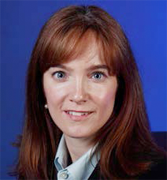
Ellen Cerreta
Cerreta was cited for "outstanding contributions in the fields of dynamic and shock behavior of materials, as well as structure/property effects on mechanical behavior and damage evolution in materia ls."
Cerreta holds a Ph.D. in materials science and engineering from Carnegie Mellon University. She joined the Laboratory as a postdoctoral associate and is now the MST-8 group leader. Her research focusing on the correlation of microstructure to mechanical response of metals supports the weapons, global security, DOE Office of Basic Energy Sciences, and Laboratory Directed Research and Development (LDRD) programs. Cerreta is an adjunct faculty member in the Institute of Shock Physics at Washington State University. She serves on the Board of Directors of the TMS (The Mineral, Metals and Materials Society) and the Board of Trustees of the ASM. Technical contacts: Beverly Aikin and Ellen Cerreta.
Elizabeth Kelly elected Fellow of the American Statistical Association
The American Statistical Association (ASA) has chosen Elizabeth Kelly (Statistical Sciences, CCS-6), as Fellow. This distinction is reserved for less than one-third of one percent of the membership. The ASA recognized her for providing exemplary statistical leadership of and collaboration on multidisciplinary teams dealing with environmental restoration, weapon quality, and nuclear materials storage to ensure the safety and security of the nation. She will receive the Fellow award at a 2016 Joint Statistical Meetings ceremony in Chicago this August.

Elizabeth Kelly
Kelly received her Ph.D. in Biostatistics from the University of California – Los Angeles, and joined LANL in 1985 as a scientist in the Statistical Sciences Group. She has served as the project leader for Environmental Restoration Assessments Technical Teams in the Environmental Restoration Program and as the deputy group leader for CCS-6. Currently she develops surveillance sampling plans and statistical modeling and analysis approaches in support of programs to ensure the safe storage and disposal of plutonium-bearing materials. Kelly is a member of the American Statistical Society and the American Society for Quality.
The ASA is the world’s largest community of statisticians and the oldest continuously operating professional science society in the USA. Its 18,000 members serve in industry, government, and academia in more than 90 countries, advancing research and promoting sound statistical practice to inform public policy and improve human welfare. Technical contact: Elizabeth Kelly
Meyerhofer and Ronning named American Physical Society outstanding referees
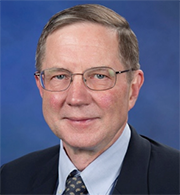
David Mayerhoffer
The American Physical Society (APS) selected David Meyerhofer and Filip Ronning as Outstanding Referees for 2016 for their work assessing manuscripts for publication in the society’s Physical Review journals. The APS chose 146 honorees from 30 years of records on more than 69,000 referees who had reviewed manuscripts. The basis for award selection included the quality, number, and timeliness of their reports, without regard for APS membership, country of origin, or field of research.
Meyerhofer (Physics Division, P-DO) earned his Ph.D. in plasma physics from Princeton University. He joined Los Alamos in 2015 as the Physics Division Leader. Meyerhofer is an APS Fellow, chair of the APS Division of Plasma Physics, and has served on the National Research Council’s Committee on High Energy Density Plasma Physics. He chaired the Predictive Science Panel, which provides peer review of predictive weapons physics at Livermore and Los Alamos national laboratories.
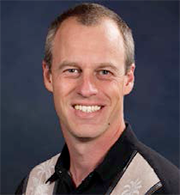
Filip Ronning
Ronning (Condensed Matter and Magnet Science, MPA-CMMS) earned a Ph.D. in physics from Stanford University for his angle resolved photoemission work on strongly correlated oxides. He joined LANL in 2003 as a Reines Distinguished Postdoctoral Fellow and was converted to staff in 2006. Ronning is currently the transport and thermodynamics capability leader in MPA-CMMS, where he studies strongly correlated, topological, and superconducting materials. He is an APS Fellow.
The American Physical Society is a nonprofit membership organization working to advance and diffuse the knowledge of physics through its outstanding research journals, scientific meetings, and education, outreach, advocacy and international activities. APS represents more 53,000 members, including physicists in academia, national laboratories and industry in the United States and throughout the world. Technical contacts: David Meyerhofer and Filip Ronning
Chikara, Manore, Moore, Myers chosen as Postdoc Research Day presentation winners
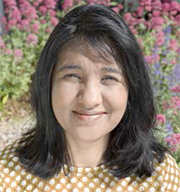
Shalinee Chicara
Shalinee Chikara (Condensed Matter and Magnetic Science, MPACMMS; Vivien Zapf, mentor) presented “Beyond Conventional Magnetism: New Path to Multiferroic Behavior.” Chikara’s work demonstrated for the first time multiferroic behavior due to spin-state transitions using high magnetic fields at the National High Magnetic Field Laboratory facilities at Los Alamos and in Tallahassee, FL. She concluded that spin state transitions is a novel way to obtain multiferroic behavior without requiring long-range magnetic order. Occurrence of these transitions in metal organics at room temperature might make room temperature multiferroics realizable.
Research Day is a Laboratory-wide event where postdocs are provided the opportunity to present a summary of their research in an environment fostering enhanced collaboration and technical discussions among postdocs, staff, and management. This year, 59 LANL postdocs and 10 Sandia National Laboratory postdocs showcased their research. Senior management selected 20 participants to give a three-minute overview presentation about their research. Four postdocs received an “Outstanding Presenter” designation, as described in the following paragraphs.
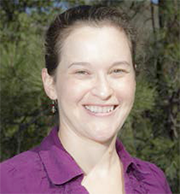
Carie Manroe
Carrie Manore (Theoretical Biology and Biophysics, T-6 and Intelligence and Systems Analysis, A-2; Benjamin McMahon, Nick Hengartner, and Sara Del Valle, mentors) presented “Modeling Zika Virus and Mosquito-Borne Disease Risk in the United States.” Manore used data from past chikungunya outbreaks, the current Zika outbreak, and mosquito data from researchers in the US, to design and simulate a mathematical model quantifying the risk of disease spread in the Mid-Atlantic states. She showed that isolated outbreaks will likely occur, particularly if introduced at the right time of the year and in areas with high mosquito densities.
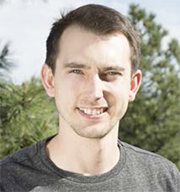
Cameron Moore
Cameron Moore (Inorganic, Isotope and Actinide Chemistry, C-IIAC; Andrew Sutton, mentor) presented “Atom-Efficient Upgrading of Isopropanol/Acetone Mixtures Produced by Microbial Fermentation of Biomass Hydrolysates.” Moore described development of selective catalytic routes to synthesize potential fuel molecules from acetone/isopropanol chemical feedstocks that can be produced by microbial fermentation of biomass. The catalytic conditions can be modified to produce a range of products, such as gasoline components, solvents, paint additives, chemical precursors, and diesel components.
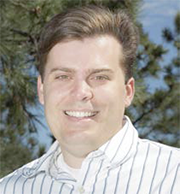
Thomas Myers
Thomas Myers (High Explosives Science and Technology, M-7 and Nuclear and Radiochemistry, C-NR and C-IIAC; David Chavez, Susan Hanson, and Jackie Veauthier, mentors) presented: “Energetic Chromophores: Tuning Charge Transfer in Explosive Fe (II) Tetrazine Complexes for Laser Initiation.” Myers developed air-stable explosive materials that are more sensitive than the explosive PETN towards laser initiation while also being less sensitive than PETN towards conventional stimuli. Researchers are incorporating the materials into prototype optical detonators.
Technical contact: Mary Anne With
Bioscience
LANL hosts Annual Sequencing Meeting and Sequencing/Bioinformatics Training
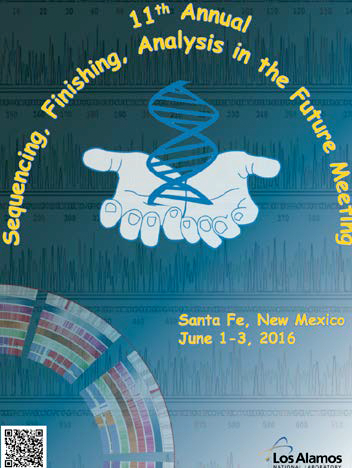
The Bioinformatics and Genomics Team hosted the annual Sequencing, Finishing, and Analysis in the Future Meeting in Santa Fe, NM. The meeting brought together experts in the genomics field – including representatives from the industries that serve this specialized scientific community. The meeting focused on laboratory methods and computational tools used to help sequence, assemble, and finish genomes, including new sequencing technologies that provide high-throughput results by sequencing more base-pairs per run at longer read-lengths. The conference has grown from about 70 people when it began in 2006 to a record 350 participants this year. When the meeting began in 2006, the focus was only on finishing (the process of evaluating and repairing missing and/or repeated sections of sequence data). The conference has changed to reflect the evolution of the entire field of sequencing over the last decade. Today, sequencing is faster and more affordable than ever before, allowing scientists to sequence entire communities of organisms at once (called metagenomics). However, this produces virtual mountains of genomic data to sift through and decipher. Therefore, many of the talks focused on algorithms and bioinformatics for analysis of genomes and metagenomes. Keynote and invited speakers also discussed how genomic data enhance their research projects, such as antimicrobial resistant bacteria in hospitals, the influence of bacteria on complex diseases (e.g., diabetes), and the current outbreak of Zika virus. Los Alamos organizers included: Patrick Chain, David Bruce, and Shannon Johnson (Biosecurity and Public Health, B-10); and Chris Detter (Intelligence and Emerging Threats, GS-IET).
A team composed of Lab researchers and collaborators reported on Middle East respiratory syndrome corona virus (MERS-CoV), a virus related to Sudden Acute Respiratory Syndrome (SARS) that was identified in southern China in 2003. SARS spread to 37 countries with a fatality rate of nearly 10 percent. By comparison, the fatality rate of MERS-CoV, based on 1045 confirmed cases identified by July 2015, was said to be 44 percent. The investigators sequenced coronaviral strains isolated from infected patients, studied the phylogenic relationships and compared them with other reported MERS-CoV genomic sequence data, and examined the phylogenic correlation, pathogenicity, and epidemiology of these strains in comparison with other known strains. Researchers include: Amanda Mercer, Cheryl D. Gleasner, Tracy Erkkila, Shannon Johnson, and Helen Hong Cui (B-10); Saied A. Jaradat and Hazem Haddad (Princess Haya Biotechnology Center/Jordan University of Science and Technology).
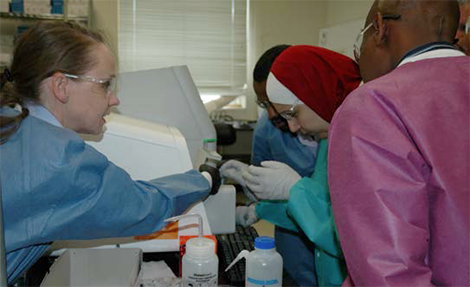
Cheryl Gleasner (far left) demonstrates how to load samples into a sequencer.
Los Alamos also hosted Sequencing and Bioinformatics Training, which started four years ago. The event is an opportunity for scientists and technicians from around the world to visit Los Alamos for a hands-on training involving next generation genome sequencing as well as analysis using unique LANL-developed bioinformatics tools. Participants from the USA, Kenya, Uganda, Gabon, Ethiopia, Jordan, Georgia, South Korea, Singapore, and Kazakhstan attended the training. Many of the participants were already collaborators with Los Alamos as part of Department of State and Defense Threat Reduction Agency programs. These programs began four years ago to develop and enhance sequencing and bioinformatics capabilities worldwide. The programs aim to 1) establish or improve technological capabilities of laboratories in various countries to combat infectious diseases through improved characterization and faster, more accurate detection, and 2) promote a sustainable culture of safe and secure laboratory practice through the education and training of staff.
The work supports the Lab’s Global Security and Energy Security mission areas and the Science of Signatures science pillar. Technical contact: Helen Cui
Capability Enhancement
Team saves Lab millions for Trinity computer installation
Trinity, LANL’s latest major high performance computer, is designed to provide increased computational capability for the NNSA Nuclear Security Enterprise in order to increase geometric and physics fidelities in calculations that can be completed in weeks – not years. The Laboratory’s High Performance Computing (HPC) facilities team, led by Data Center Manager Ron Velarde (HPC-Design, HPC-DES), has been proactive in saving Laboratory and taxpayer money in the successful execution of large facilities projects with regards to Trinity. Along with Velarde, the team includes Andres Borrego, Michael Ferguson, Alynna Montoya-Wiuff, Eloy Romero, and Loren Serna (HPC-DES).
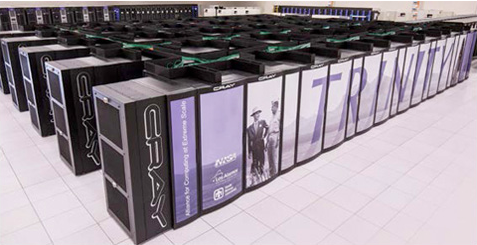
Trinity Computer
Velarde discovered the potential to re-engineer Cray’s initial wiring diagram for power feed to Trinity compute racks. As a result, the facilities team executed a redesign validated by Cray and National Laboratories and Lawrence Berkeley National Laboratory have adopted this redesign for their Trinity-like systems. The facilities team also used prefabricated copper tray cable rather than fabricating the cables on site. This resulted in additional savings in both labor and excess material cost for the 22,000 feet of tray cable that was installed to power Trinity. For HPC systems in the Laboratory Data and Communications Center (LDCC).

Fire compute installation cluster
The Trinity Phase 1 system, based on the Haswell processor, is currently performing simulations. The Trinity Phase 2 system, based on the Knight’s Landing processor, and the Fire and Ice capacity computing system (which will replace Typhoon and Luna), are being delivered this summer. As many as four trucks per day will transport segments of computing platforms to the Strategic Computing Complex (SCC) and LDCC. As an example of the scales involved, Phase 2 of the Trinity system, which began to arrive in June, weighs just under 100 tons. Trinity weighs about 175 tons and contains twelve miles of copper cable and 44 miles of optical cable. Over sixteen thousand gallons of water will circulate in the inner process loop to cool Trinity at a flow rate of around 10,000 gallons per minute.
Chemistry
High-efficiency nanoelectrocatalysts examined
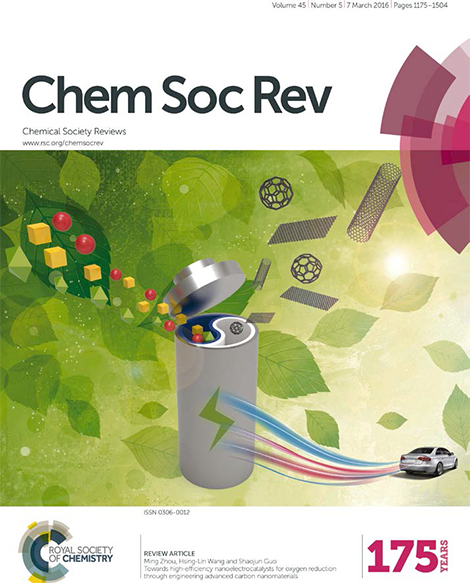
The journal’s cover illustration shows a high-efficiency fuel cell based on carbon nanomaterial-based noble-metal-free oxygen reduction electrocatalysts. These combine the advantages of carbon nanomaterials (right side) with large surface area/stable structure and heteroatom/transition metal-based nanoparticle/iron carbide-based nanoparticles (left side of image) with high the oxygen reduction reaction electrocatalytic activity.
Hsing-Lin Wang (Physical Chemistry and Applied Spectroscopy, C-PCS) and collaborators Ming Zhou and Shaojun Guo have published a review article on nanoelectrocatalysts in the journal Chemical Society Reviews. Development of new, more efficient catalysts made from abundant materials is a key step to enable industrial development of many energy-related technologies. The journal featured the review on its cover.
Industrial fuel cells such as proton exchange membrane fuel cells, direct methanol fuel cells, and biofuel cells suffer from high cost, serious intermediate tolerance, anode crossover, sluggish kinetics, and poor stability of the catalyst. These fuel cells generally use precious metals such as platinum as the preferred electrocatalyst for the oxygen reduction reaction (ORR) at the cathode. The search for inexpensive electrocatalysts free from noble metals and practical for ORR has created one of the most active and competitive fields in chemistry and materials science. Fuel cells are clean and efficient energy conversion devices that can directly convert the chemical energy of fuels to electricity through electrochemical processes. By using hydrogen (H2) or methanol as fuels and oxygen (O2) as reductants, the fuel cells can be operated at close to room temperature. These fuel cells could provide promising power solutions for future electric vehicles and portable electronic devices. However, the cost of platinum accounts for up to 49% of fuel cell stack cost. Therefore, the cost of fuel cells is directly linked to the price of platinum in the volatile and highly monopolized precious metal market. Wang’s lab has developed highly efficient nonprecious metal electrocatalysts for ORR, hydrogen evolution reaction, and oxygen evolution reaction.
In the review article, Wang and colleagues summarize recent advances in engineering advanced carbon nanomaterials with different dimensions for the design and synthesis of noble-metal-free oxygen reduction electrocatalysts, including heteroatom-doped carbon nanomaterials, transition metal-based nanoparticle (NP)–carbon nanomaterial composites and especially the stable iron carbide (Fe3C)-based NP–carbon nanomaterial composites. They also examine advanced carbon nanomaterials with high specific surface area and stable structure. These ORR materials do not use noble metals and maximize electrocatalyst surface area for the electron transfer while enhancing electrocatalyst stability for long-term operation. The authors discuss examples that could open new directions to design and optimize advanced carbon nanomaterials for the development of extremely active and durable earth-abundant cathodic catalysts for fuel cell applications.
In the review article, Wang and colleagues summarize recent advances in engineering advanced carbon nanomaterials with different dimensions for the design and synthesis of noble-metal-free oxygen reduction electrocatalysts, including heteroatom-doped carbon nanomaterials, transition metal-based nanoparticle (NP)–carbon nanomaterial composites and especially the stable iron carbide (Fe3C)-based NP–carbon nanomaterial composites. They also examine advanced carbon nanomaterials with high specific surface area and stable structure. These ORR materials do not use noble metals and maximize electrocatalyst surface area for the electron transfer while enhancing electrocatalyst stability for long-term operation. The authors discuss examples that could open new directions to design and optimize advanced carbon nanomaterials for the development of extremely active and durable earth-abundant cathodic catalysts for fuel cell applications.
Reference: “Towards High-Efficiency Nanoelectrocatalysts for Oxygen Reduction Through Engineering Advanced Carbon Nanomaterials,” Chemistry Society Reviews 45, 1273 (2016); doi: 10.1039/c5cs00414d. Authors: Ming Zhou (Northeast Normal University, P.R. China), Hsing-lin Wang (C-PCS), and Shaojun Guo (Peking University, P.R. China).
Laboratory Directed Research and Development (LDRD) funded the LANL work, which supports the Lab’s Energy Security mission area and the Materials for the Future science pillar through the development of noble-metal-free fuel cell catalyst materials. Technical contact: Hsing-Lin Wang
Earth and Environmental Sciences
Improving the capability to detect underground nuclear explosions
NNSA’s Source Physics Experiment (SPE) series conducts conventional explosives experiments at the Nevada National Security Site to improve the United States’ capability to detect and characterize underground nuclear explosions. Performing the SPE experiments near the location of previous underground nuclear tests enables researchers to compare data from conventional and nuclear explosions. This advances the Nation’s capability to distinguish low-yield nuclear test explosions from other seismic activity such as mining operations and small earthquakes. The advanced capability helps to identify whether state or non-state actors are hiding low-yield nuclear testing to develop or improve nuclear weapons. Researchers in the Lab’s Earth and Environmental Sciences (EES) Division have a major role in providing scientific expertise for the SPE series. This expertise builds on capabilities developed to support energy and environmental science research, repository science projects, and the Nation’s past nuclear testing activities.
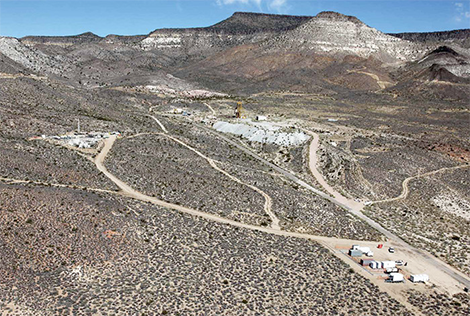
Aerial photo of the field site at the Nevada Nuclear Security Site. Photo credit: NSTec
SPE aims to develop a validated and robust predictive capability to model and characterize low yield nuclear tests anywhere in the world. SPE differs from past and other current experiments – including nuclear tests conducted previously in Nevada and ongoing chemical experiments – because it combines advanced first-principles computer simulations with field experiments in an iterative fashion, including predictions made before the explosion. These predictions are then compared with observed data. A comprehensive program of study seeks to advance the physical understanding of source phenomenology, near-field wave propagation, coupling of energy into the seismic wavefield, and generation of shear waves (also called S-waves) from explosive sources. The SPE program obtains data in both the nearfield and the far-field regions of chemical explosion tests for analysis and comparison with numerical models to enhance the understanding of explosion source phenomenology. This knowledge will augment the Nation’s technical capabilities for monitoring underground nuclear tests worldwide.
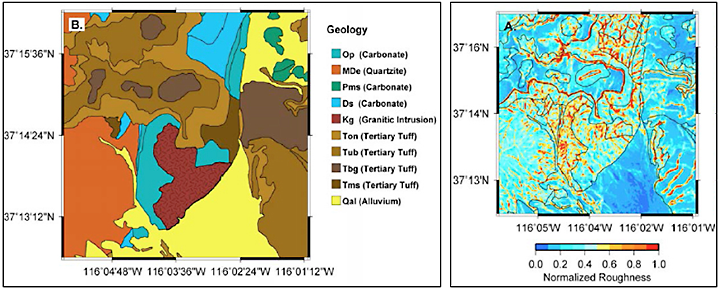
Figure 2. (Left): Geologic boundaries. (Right): Normalized topographic roughness is in very good correlation with geologic boundaries. (Black lines designate geologic boundaries in the normalized topographic roughness image).
The Source Physics Experiment (SPE) program successfully conducted their fifth conventional explosion experiment in granite at the Nevada National Security Site on April 26, 2016. This experiment, known as SPE-5, used chemical explosives equivalent to 5,000 kilograms of TNT detonated 76 meters underground. Investigators gathered information on SPE-5 through a variety of technologies, including high-resolution accelerometer, infrasound, seismic, explosive performance, high-speed video, aerial-based light detection and ranging, drone-based photogrammetry and synthetic aperture radar data. EES researchers designed the confinement for SPE-5, characterized geology, acquired high-resolution data to analyze damage of the shot, and collaborated on analysis and modeling the data.
LANL participants in SPE-5: Catherine Snelson, Ting Chen, Christopher Bradley, Rodney Whitaker, David Steedman, Esteban Rougier, Earl Knight, Howard Patton, Carene Larmat, Charlotte Rowe, David Yang, W. Scott Phillips, and Andrew Delorey, (Geophysics, EES-17); Aviva Sussman, Jennifer Wilson, Erika Swanson, Liz Miller, Emily Schultz-Fellenz, Elaine Jacobs, and Dea Musa (Earth System Observations, EES-14). In addition to Los Alamos, Livermore, and Sandia national laboratories, the SPE team includes researchers from the Nevada National Security Site, the University of Nevada – Reno, Weston Geophysical Corporation, and the Department of Defense’s Defense Threat Reduction Agency.
The EES research from earlier SPE shots has been published, as described in the following paragraphs. Laboratory scientists are continuing to analyze data from the SPE series.
Using topography to predict geology: Topography reflects the geological structure of a terrain. Harder rock types (e.g., granite and limestone) are characterized by rougher topography and lower drainage densities; softer rock types (e.g., alluvium) are characterized by smoother topography and higher drainage densities. The SPE study area provides an ideal location for proof-of-concept studies of the relationship between geology and landforms, due to the presence of multiple rock types, the availability of geologic maps, and the creation of digital elevation models in conjunction with the SPE shots. This study demonstrated that with 1 m resolution digital elevation models, terrain characterization can differentiate underlying lithological types, and 0.25 m resolution digital elevation models can be used to evaluate fracture patterns in rock.
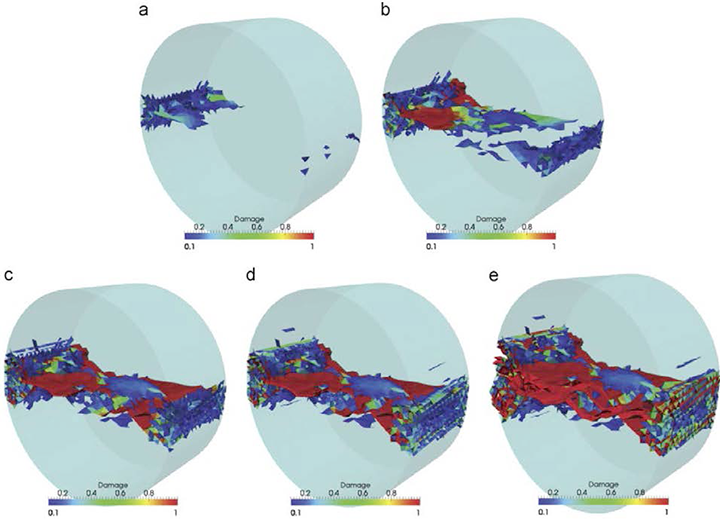
Figure 3. Fracture pattern sequence at (a) 80 μs, (b) 100 μs, (c) 120 μs, (d) 140 μs, and (e) 460 μs.
Reference: “Quantitative Geomorphometrics for Terrain Characterization,” International Journal of Geosciences 5, 247 (2014); doi: 10.4236/ijg.2014.53026. Authors: D. Coblentz, F. Pabian, and L. Prasad.
Using experiment results on weathered granite to validate 3-D models: The Finite-Discrete Element Method (FDEM) is a commonly used tool in rock mechanics applications to simulate many complex processes, including block caving, rock blasting, deep mining techniques, seismic waves, and rock slope stability. The method uses discrete crack initiation and crack propagation models to provide complex dynamic fracture patterns and eventual fragmentation. Researchers demonstrated a full-scale 3-D analysis of a Split Hopkinson Pressure Bar (an apparatus used for testing stress-strain response of materials) experiment on weathered granite using a 3-D FDEM. Building upon previous efforts to simulate Split Hopkinson Pressure Bar experiments using 2-D FDEM, this work modeled the entire 3-D Split Hopkinson Pressure Bar experimental setup. The results reproduce the softening behavior of the sample after breakage and introduce the effect of a compliant interface between the bars and the sample. The research provides insight into the complex and dynamic fracture processes between intact granite and weathered granite, both of which are found at the SPE test bed.
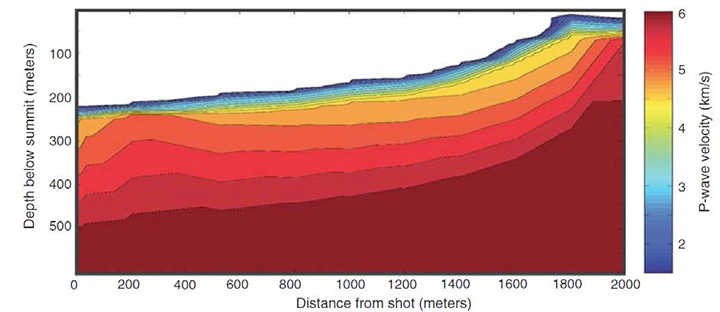
Figure 4. Velocity contours of the SPE site obtained through application of a 2-D ray-tracing program to the P-wave arrivals on one of the five geophone lines.
Reference: “Validation of a Three-dimensional Finite-Discrete Element Method Using Experimental Results of the Split Hopkinson Pressure Bar Test,” International Journal of Rock Mechanics and Mining Sciences 70, 101 (2014); doi: 10.1016/j.ijrmms.2014.03.011. Authors: E. Rougier, E. E. Knight, S. T. Broome, A. J. Sussman, and A. Munjiza.
Using seismic source functions for source models of shallow explosions: The researchers analyzed free-field data acquired in the strong motion regime of the first three SPE shots. A comparison of the reduced displacement potentials with current source model predictions shows that current models fail to predict the shape and corner frequency (the boundary at which energy flowing through a system is reduced rather than passing through) of the observed potentials. This discrepancy is related to a breakdown in the current model assumption that the source medium is incompressible. The authors present new formulas for volume changes due to medium bulking (or compaction), which is responsible for more than 75% of the seismic moment.
Reference: “Seismic Source Functions from Free-Field Ground Motion Recorded on SPE: Implications for Source Models of Small, Shallow Explosions,” Journal of Geophysical Research: Solid Earth 120, 3459 (2015); doi: 10.1002/2014JB011773. Authors: E. Rougier and H. J. Patton.
Investigation of structural variations using seismic waves: Researchers developed data-driven seismic velocity models for the SPE site. Without a reliable near-field seismic model, far-field models (usually the only information available for foreign nuclear explosions) cannot be confidently related to near-field source phenomenon. The team used data from geophone lines to construct velocity models that are consistent with Rg (surface-wave) phase velocity and P-wave (body wave) refraction observations. This qualitative agreement between P-wave and Rg analyses provides the initial crude models on which more detailed seismic analyses can be built.
Reference: “Investigation of Structural Heterogeneity at the SPE Site Using Combined P-Wave Travel Times and Rg Phase Velocities,” Bulletin of the Seismological Society of America 105, 2379 (2015); doi: 10.1785/0120150022. Authors: C. A. Rowe and H. J. Patton.
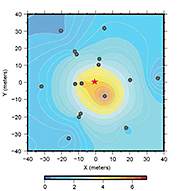
Figure 5. Contours of peak radial velocity for all accelerometer locations for SPE-‐2 projected onto a plane through the SPE-‐2 source. The red star is the ground zero projection of the source; black dots are the projected gauge locations onto the source plane; red to blue is high to low velocity.
Near-field phenomenology and modeling of shear energy for SPE: The researchers present a high fidelity site model integrated with a numerical simulation that mimics the near field velocity environment that is measured during a SPE detonation using in-ground accelerometers. This approach was accommodated through a coupled Euler-Lagrange code that allowed simultaneous solving of an Eulerian domain (which models the high-deformation source region) and a Lagrange domain (which includes complex geology). The model included laboratory-measured geomechanical properties. The simulations align well with the accelerometer data and provide a possible physical mechanism for unexpected shear motion through the release of stored shear strain on joints.
Reference: “Phenomenology and Modeling of Explosion-Generated Shear Energy for the Source Physics Experiments,” Bulletin of the Seismological Society of America 106(1), 42 (2016); doi: 10.1785/0120150011. Authors: D. W. Steedman, C. R. Bradley, E. Rougier, and D. D. Coblentz.
NNSA NA-22 funded the work, which supports the Lab’s Global Security mission area and the Science of Signatures science pillar through the capability to detect and characterize underground nuclear explosions. Technical contact: Cathy Snelson-Gerlicher
Materials Physics and Applications
Water-removal technique boosts performance of nanomaterials for energy applications
Carbon nanomaterials have potential utility for clean and sustainable energy conversion and storage applications, such as cheap and efficient fuel cells and metal-air batteries. However, a greater understanding of the key design factors that control the formation of high-performing materials is needed. A Los Alamos-led team discovered the critical role of water in the formation of catalysts for oxygen reduction in these materials. Published in Science Advances, the research provides the first comprehensive understanding of the role of intercalated water within graphene oxide nanosheets. This information could aid the development of design rules for carbon nanomaterials for energy applications.
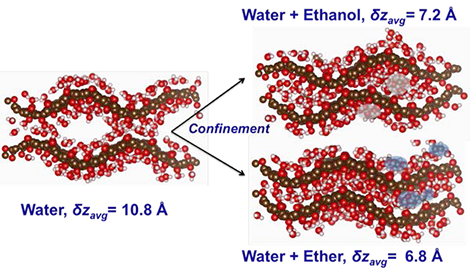
Figure 6. Theoretical models of solvent-treated graphene oxide structures. Molecular dynamics relaxed structures for water, water/ethanol, and water/ether. Brown spheres represent carbon atoms, red spheres represent oxygen atoms, and white spheres represent hydrogen atoms. Addition of solvent molecules in between each layer leads to a decrease in d-spacing as observed from x-ray diffraction data.
Graphene oxide is usually synthesized in aqueous solutions. Even “dry” graphene oxide films contain a substantial amount of intercalated water that organizes between the oxygen-functionalized nanosheets. The researchers determined that the key to designing next-generation carbon nanomaterials with enhanced performance for fuel cell and battery applications is to remove intercalated water from between the nanosheets during the preparation of functional graphitic materials. The team demonstrated a simple solvent drying technique, based on Hansen’s solubility parameters such as dispersion, hydrogen bonding character and polarity, to remove intercalated water within the graphitic sheets. The method led to significant changes in the physical structure of graphene oxide nanosheets (e.g. decrease in interlayer spacing, changes in the concentration of functional groups, and emergence of highly ordered structures). These observed changes play a direct role in forming active sites upon nitrogen doping, resulting in dramatically enhanced electrocatalytic activity.
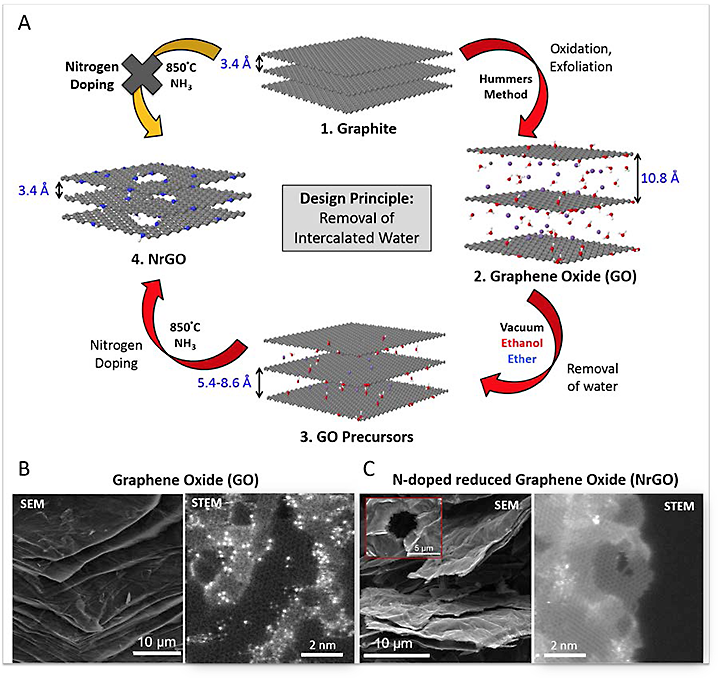
Figure 7. Synthesis of nitrogen doped reduced graphene oxide (NrGO) catalysts. A) Schematic of the process developed to make NrGO catalysts. Natural graphite is chemically functionalized and exfoliated using potassium permanganate and sulfuric acid (modified Hummers method) to produce a graphene oxide (GO) powder with a d-spacing of approximately 1 nm. GO is then subjected to different solvent rinsing treatments followed by vacuum drying to remove unbound intercalated water as indicated by the decrease in d-spacing. The resulting dried GO is doped with nitrogen leading to the formation of NrGO catalysts with a final spacing of 3.4 Å. B) Electron micrographs of GO, and C) Nitrogen-doped GO (ether) showing oxidized and graphitic domains. Brighter atoms correspond to Si atoms, a common graphene impurity.
The team demonstrated state-of-the-art performance of nitrogen-doped reduced graphene oxide in acidic media, a technologically relevant environment. Moreover, durability testing revealed the material demonstrated the best electrochemical stability reported thus far for graphene oxide nanosheet-based catalysts in an acidic environment. The material exhibited a greater than 95% selectivity for the desired 4-electron reduction of oxygen to form water.
Reference: “Critical Role of Intercalated Water for Electrocatalytically Active Nitrogen-Doped Graphitic Systems,” Science Advances 2, e1501178 (2016): doi: 10.1126/sciadv.1501178. Authors: Ulises Martinez, Joseph Dumont, Geraldine Purdy, Akhilesh Singh, Piotr Zelenay, Andrew Dattelbaum, Aditya Mohite, and Gautam Gupta (Materials Synthesis and Integrated Devices, MPA-11); Edward Holby (SIGMA); Nathan Mack (Nuclear Nonproliferation and Security, GS-NNS); Joseph H. Dumont (MPA-11 and University of New Mexico); Kateryna Artyushkova and Plamen Atanassov (University of New Mexico); David A. Cullen and Karren L. More (Oak Ridge National Laboratory); and Manish Chhowalla (Rutgers University).
The Laboratory Directed Research and Development (LDRD) program funded the Los Alamos work, which supports the Lab’s Energy Security mission area and Materials for the Future science pillar through the development of materials for energy applications. The work was performed, in part, at Center for Integrated Nanotechnologies (CINT), an Office of Science User Facility operated for the DOE Office of Science by Los Alamos and Sandia national laboratories. Technical contact: Gautam Gupta
Materials Science and Technology
Rapid method developed to calculate properties of multicomponent materials
The properties of materials with many elements are difficult to calculate because there are an extremely large number of possible ways to arrange the atoms within the structure. Researchers have developed a computer modeling technique, called the small set of ordered structures (SSOS) method, to calculate the properties of multicomponent materials efficiently. The SSOS approach makes possible high-throughput calculations of random systems, such as complex oxides and high entropy alloys. The journal Physical Review Letters published the findings.

Figure 8. (a – c): Using three 5-‐atom structures, appropriately weighted to reproduce random correlations, the properties of equiatomic multicomponent alloys, such as high entropy alloys (HEAs), can be efficiently calculated with SSOS. (d) The “equivalent” 125-‐atom SQS structure. SSOS enables high-‐throughput screening of such systems.
The SSOS method enables extremely efficient ab initio modeling of random multi-component alloys. The researchers used inverse II-III spinel oxides and equiatomic quinary bcc (so-called high entropy) alloys as examples to demonstrate that SSOS can achieve the same accuracy as large special quasi-random structure (SQS) supercells or a well-converged cluster expansion – the two state-of-the-art approaches to this problem – but with significantly reduced computational cost. The efficiency of SSOS enables rapid screening of a large number of quinary alloy compositions. As a result, this method could lead to the identification of several new possible high entropy alloy chemistries.
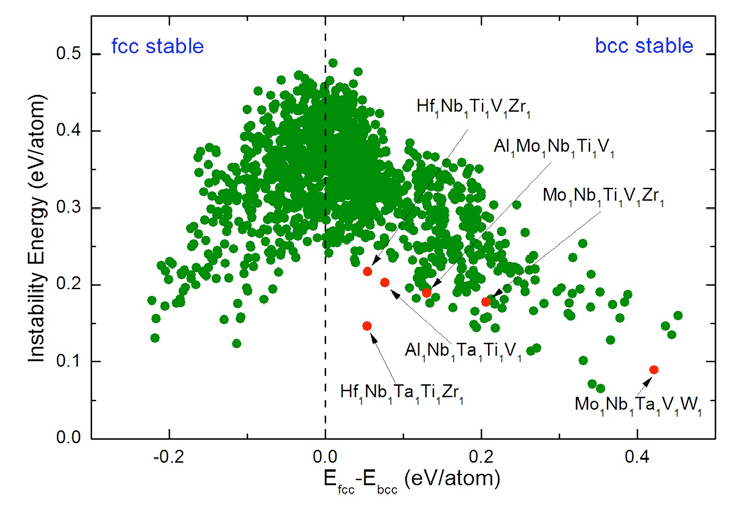
Figure 9. SSOS high-throughput screening of potential single-phase bcc HEA compositions. The graph depicts an instability energy versus lattice stability plot for 1337 HEA candidates. The calculations identify current high-entropy alloys (HEA) compositions (red points) and predicted several new potential HEA compositions.
The combined accuracy and high computational efficiency of SSOS allows high-throughput screening of the phase stability of a large number of potential bcc high entropy alloy compositions using only limited computing resources. The researchers showed that the SSOS method could predict the energetics and structural properties of random alloys in excellent agreement with those obtained using much larger supercells.
Because the SSOS method relies on small cells, it allows for the possibility of high-throughput density function theory (DFT) calculations of high-order multicomponent systems, such as high entropy alloys, and it is ideally suited for use with more accurate but costly electronic structure approaches. The SSOS approach could be employed to calculate any property that can be modeled by a short-range cluster expansion, such as band gap, vibrational entropy, and bulk modulus. Thus, the SSOS method could be broadly useful for the rapid computational design of multicomponent materials, especially those with a large number of alloying elements – a challenging problem for other approaches.
Reference: “Efficient Ab initio Modeling of Random Multicomponent Alloys,” Physical Review Letters 116, 105501 (2016); doi:10.1103/PhysRevLett.116.105501. Authors: Chao Jiang (now at Idaho National Laboratory) and Blas Uberuaga (Materials Science in Radiation and Dynamics Extremes, MST-8).
The DOE Office of Science, Basic Energy Sciences, Materials Sciences and Engineering Division sponsored Uberuaga’s work. The research supports the Lab’s Energy Security mission area and the Materials for the Future and the Information, Science, and Technology science pillars by developing efficient modeling methods for the design of complex materials. Technical contact: Blas Uberuaga
Physics
Cosmic ray muon computed tomography of spent nuclear fuel in dry storage casks
Radiography with cosmic ray muon scattering has proven to be a successful method of imaging nuclear material through heavy shielding. Development of the technique to monitor spent nuclear fuel sealed in dry storage casks would have useful international safeguards applications. These casks are heavily shielded to prevent radiation leakage to the environment. This precludes monitoring using typical radiographic probes such as neutrons or photons. Subatomic Physics (P- 25) researchers and collaborators have demonstrated a novel approach to image these casks using cosmic ray muon imaging and computed tomography algorithms typically used in medical imaging. The team used a cylindrical muon-tracking detector surrounding a typical spent fuel cask to demonstrate that cask contents could be confirmed with high confidence with less than two days of exposure.
Cosmic ray muons are produced through interactions of protons and nuclei from space with atoms in the upper atmosphere. Collisions of these primary cosmic rays with atmospheric gas produce showers of pions, many of which decay to muons. These muons arrive on the Earth’s surface at a rate of approximately 1/cm2/min with an average energy of approximately 4 GeV. They form a naturally occurring probe that can be used to radiograph objects from multiple views simultaneously. Due to their high energies, ubiquitous availability, and highly penetrating nature, comic ray muons are being explored as a tool for a variety of difficult imaging scenarios.
Monitoring spent nuclear fuel that is sealed in dry storage casks is of particular interest for international safeguards applications to detect diversion. Muon radiography offers a standalone method to determine a cask’s contents and recover from a loss of continuity of knowledge.
Previous muon radiography measurements on a fuel cask used drift tube tracking detectors to measure the areal density between the two detectors. This method showed that missing fuel assemblies could be located, but the single measurement of integrated density left ambiguity in the exact location of the missing fuel elements in the direction orthogonal to the two detectors.
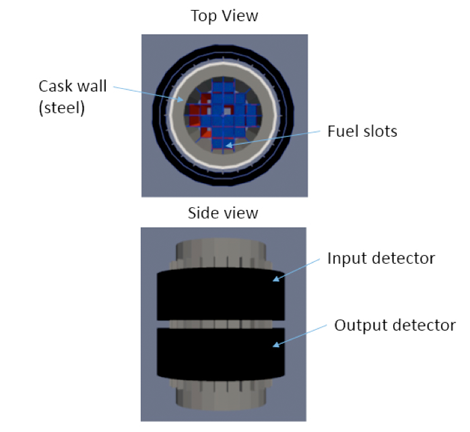
Figure 10. (Top): Top down view and (bottom) side view of the simulated cask and detector geometries. The fuel assembly loading configuration is shown with six fuel assembly compartments left empty.
This new work describes the first application of filtered back projection algorithms, typically used in medical imaging, to cosmic ray muon imaging. The team developed the specific application to monitor spent nuclear fuel in dry storage casks via GEANT4 simulations. The investigators used a cylindrical muon tracking detector fitting around the outside of a partially loaded Westinghouse MC-10 cask of the type used at Idaho National Laboratory. The detector completely surrounded the cask. This geometry increased the detector’s active area and enabled simultaneous measuring of muon scattering through all azimuthal angles of the cask. With this continuum of areal density measurements, computed tomography image reconstruction algorithms could be applied to produce full images of the cask interior. The team utilized a filtered back-projection algorithm on the data. The resulting simulations of muon imaging of a partially loaded dry storage cask demonstrate that the missing fuel assemblies could be located with high confidence in a process that took less than two days.
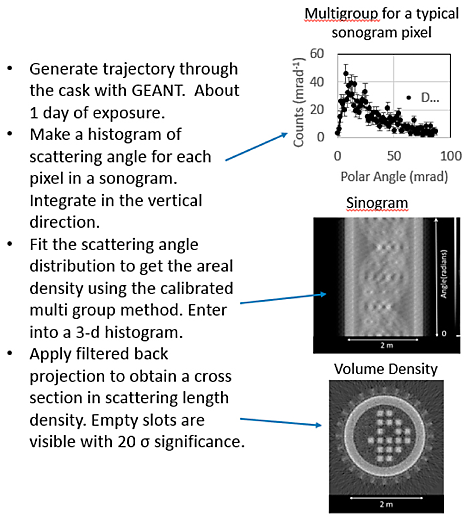
Figure 11. Process used to analyze data and obtain a volume density image of the cask with fuel rods and empty slots.
Figure 11 depicts the process that the team used. The images clearly reveal the structures of the cask including the cooling fins, steel shielding shell, and the loading configuration of the fuel assemblies. The new technique, which fulfills an NA-22 milestone and solves a three decades-old safeguard challenge, shows that the diversion of spent fuel assemblies could be determined without opening the cask and on a time scale well within the International Atomic Energy Agency’s timeliness goals. The team concludes that this technique and a dedicated instrument could be a useful tool for international nuclear safeguards inspectors.
This work, which is funded by the National Nuclear Security Administration’s Office of Defense Nuclear Nonproliferation Research and Development (LANL Program Manager, Roger Petrin), supports the Laboratory’s Global Security mission area and the Science of Signatures pillar. Researchers include: Daniel Poulson (P-25 and University of New Mexico, Albuquerque), J. Matthew Durham, Elena Guardincerri, Christopher L. Morris, Jeffrey D. Bacon, Kenie Plaud- Ramos, and Deborah Morley (P-25); and Adam Hecht (University of New Mexico, Albuquerque). Technical contact: Chris Morris
Theoretical
Space weather workshop addresses how far are we from predictive capabilities
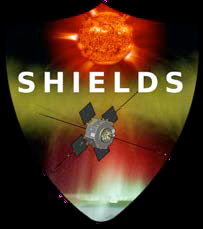
SHIELDS (Space Hazards Induced Near Earth by Large Dynamic Storms) is a Laboratory project led by Vania Jordanova (Space Science and Applications, ISR-1). The research investigates space weather hazards and their mitigation in support of the Lab’s Global Security and Energy Security mission areas. The term “space weather” refers to the dynamic conditions of the space environment that arise from emissions from the sun, which include solar flares, solar energetic particles, and coronal mass ejections. Space weather can disrupt technologies in space and on Earth that form the backbone of this country’s economic vitality and national security, including satellite and airline operations, communications networks, navigation systems, and the electric power grid.
This emerging research field is rapidly gaining importance and public recognition due to its technological and societal impact globally. It is extremely multidisciplinary (encompassing space and plasma physics coupled across spatial and temporal scales), computational science (requiring sophisticated computational tools running on high performance computing platforms), and engineering to protect infrastructure in space and on the ground. The potential economic damage from a large geomagnetic storm has been estimated to be $1-2 trillion with several years of recovery time. Thus, the impact of space weather on national security could be devastating. The White House has released a National Space Weather Strategy aimed at mitigating the effects of space weather. The report identified a need for improved fundamental understanding of space weather and increased accuracy, reliability, and timeliness of space weather observations and forecasts.
The Lab’s Center of Nonlinear Studies (CNLS) and the Center for Space and Earth Science (CSES) sponsored the SHIELDS Space Weather Workshop in Santa Fe, NM. The conference theme was “Shielding Society from Space Weather”. More than 55 participants discussed a wide range of space weather activities in a series of technical talks. The Workshop aimed to assess the present state of the field and to identify the most urgent needs. The four main topics focused on: 1) the physics of storms and substorms, 2) the coupling of microscopic physics and large-scale dynamics of the near-Earth environment, 3) modeling approaches to space weather, and 4) applications, including the charging of spacecraft and the effects on the power grid infrastructure. An article titled “How Killer Electrons in Space Wreck Havoc on Earth” appeared in PC Magazine as part of its coverage of the Workshop.
One of the pressing issues addressed at the Workshop was: How far are we from predictive capabilities for space weather and what progress has been made? Much observational data are now available to support empirical models that can be deployed quickly as space weather activity indicators, as well as to provide ground-truth for more sophisticated approaches. Physics-based approaches are reaching a more mature stage, where global models of the Earth’s magnetosphere can effectively couple to regional first-principle models. In addition, small-scale, first-principles models can be used to understand some of the physics principles underlying space weather activity. More robust data assimilation methods show promise for application in the global context. The workshop participants identified a need for well-defined community benchmarks where various aspects of space weather activity can be tested, and the strengths and weaknesses of the various approaches can be exposed. Given the breadth of physical scales to be bridged in predictive space weather science, the participants concluded that more sophistication in the computational techniques and tapping into new high-performance-computing initiatives (like the Exascale Computing Program) are critical for success in this field.
The Lab’s organizing committee included: Gian Luca Delzanno (Applied Mathematics and Plasma Physics, T-5), Vania Jordanova (ISR-1), and Mike Henderson (ISR-1). Laboratory Directed Research and Development (LDRD) funded the LANL work, which supports the Lab’s Global Security and Energy Security mission areas and the Science of Signatures science capability through the development of methods to predict, identify, and mitigate space weather hazards. Technical contacts: Gian Luca Delzanno and Vania Jordanova














